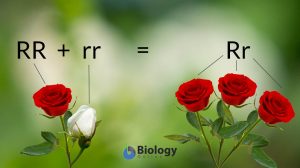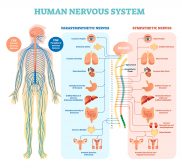Table of Contents
Degenerate means to become worse or less of its kind or former state. In biology, it means an entity performs the same function or produces the same output as a structurally-different entity does. The concept may also be used when an organism or a part of an organism deteriorates or loses quality, feature, or function compared with one’s former state. The process, status, or ability of an organism or of a structural part to degenerate is called degeneracy.
Etymology
The term degenerate came from the Latin dēgenerātus, from dēgenerō, meaning “to be inferior” or “to become unlike of one’s kind”. Synonyms: deteriorate; decay; degrade; decline.
Degenerate in biology
Degenerate in biology may mean differently. It may refer to the degeneracy, i.e. redundancy, of a biological system, such as a genetic code. Another meaning of degenerate in biology involves deterioration, deviation, or loss of one or more highly developed features. In this regard, the process or status is referred to as degeneration. A less-popular usage of degenerate is in industrial microbiology where the productivity of microbial strain used in a commercial process diminishes after repeated transfer from one culture media to another. This is often due to genetic mutations.
Degenerate code
As a descriptive term, degenerate describes the redundancy of the genetic code. A degenerate code refers to any of the codon combinations that lead to the same amino acid. In other words, an amino acid may be specified by more than one type of codon. A codon is a set of three adjacent nucleotides in mRNA. It base-pairs with the corresponding anticodon of the tRNA molecule that carries a particular amino acid. Hence, the series of codons in mRNA transcript specifies the type and sequence of amino acids for protein synthesis. Referred to as the genetic code, the sequence of the nitrogenous bases in mRNA serves as the codeword for one amino acid. There are enough different codons to specify 64 different amino acids, but there are in actuality only 20 amino acids (and three stop codons) used in the making of proteins. The degeneracy of the code means a codon whose nitrogenous base composition is different from another codon could yield the same amino acid. For instance, glutamic acid is an amino acid that may be specified by two structurally-different codons. Both codons GAA (guanine-adenine-adenine nucleotides) and GAG (guanine-adenine-guanine nucleotides) specify for glutamic acid. Another example is serine. This amino acid is coded by the codons: UCA, UCG, UCU, UCC, AGC, and AGU. This feature of the genetic code accounts for silent mutations involving a single nucleotide change. A polypeptide chain, in particular, is comprised of a sequence of amino acids. Since the amino acids may be specified by different codons mutation involving a single nucleotide does not always lead to a discernible structural change in the polypeptide, especially when the change specifies for the same amino acid. When this happens, the resulting polypeptide will not be structurally and functionally different from its kind.
Degenerate in evolution
In evolution, degenerate (in the sense of degeneration) refers to the state or process when an organism has lost one or more highly developed features. The feature may be a function or a structure. When a highly-developed ancestral structure is lost or replaced by an inferior in the course of evolution, it may be cited as degeneracy occurring in the population. According to a theory on degeneration, its proponents define degeneration as a tendency of a complex organism to deviate and become simpler, less differentiated form. Ernst Haeckel and Ray Lankester were some of the well-known evolutionary biologists that supported this theory. In contrast, Charles Darwin rejected this theory.1 Degenerationists believed that when applied to humans degeneration could implicate that human civilization could be in the face of decline.
In terms of degeneracy, it is defined as a system property wherein several components perform similar functions under certain conditions and they are also involved in certain distinct functions under other conditions.2 It appears that degenerate components promote biological robustness and there is some sort of redundancy involved. This was exemplified by the adhesins gene family of A. saccharomyces. This organism can express proteins that play specific roles during development. The same proteins are also seen to play a role similar to other proteins when the expression levels are changed. Another example is the glucose metabolism. Degenerate pathways for glucose metabolism are glycolysis and pentose phosphate pathway. Both pathways are for the metabolism of glucose. Thus, they can substitute for each other under certain conditions. 2
Degenerate in physiology and medicine
In physiology and medicine, the term degenerate may indicate deterioration, i.e. degeneration, in structure and function. Bone degeneration, for instance, is the bone degenerates as a natural process, especially during senescence, the biological aging. Senescence entails the gradual deterioration of morphological features and function of a cell or of the whole organism. At the cellular level, the cell eventually deteriorates or degenerates as it loses its ability to divide and function as it initially does. The loss of these features is attributed to the natural shortening of telomeres and in turn leads to DNA damage. At the level of the organism, senescence happens as the organism ages. Its ability to function and to deal with stressors declines. As such, the organism becomes vulnerable to dysfunction and diseases.
In medicine, degenerate similarly means deterioration over time and the condition may eventuate to a disease. Such disease is referred to as a degenerative disease. There are several degenerative diseases in humans. One of them is degenerative arthritis. It is a form of arthritis that results in the destruction of the articular cartilage that lines the joints. It is seen predominately in the larger weight-bearing joints of the hips, knees and spine. It may also be evident in the small joints of the hands. Another common degeneration is macular degeneration. It is a condition in older people where the vision degenerates, is a naturally-occurring degeneration. Another example is Alzheimer’s disease, the most common cause of dementia and an example of neurodegeneration. It is a progressive loss of function and the death of nerve cells (neurons) in several areas of the brain. This, in turn, leads to the loss of cognitive functions, e.g. memory and language. This condition usually starts in the 40s or 50s where memory becomes impaired. Over time, the affected individual suffers from impaired thought and speech, and ultimately to complete helplessness. The body fails to function as a result of the nervous system deterioration, and thereby the inability of the body to process electrical signals. Coronary artery disease and cancers are other common degenerative diseases.
Degenerative diseases are caused by degenerative changes at the cellular level that eventually affect the function at the tissue and organ level. Many of them are related to biological aging as well as genetics. However, the predisposition may be heightened by lifestyle choices.
See also
References
- “Degeneration theory”. Retrieved from https://www.basicknowledge101.com/pdf/maintain/Degeneration theory.pdf.
- Whitacre, J. M. (2010). Degeneracy: a link between evolvability, robustness and complexity in biological systems. Theoretical Biology and Medical Modelling, 7(1). https://doi.org/10.1186/1742-4682-7-6
- Whitacre (2010). “Degeneracy: a link between evolvability, robustness and complexity in biological systems”. Theoretical Biology and Medical Modelling. 7 (6): 6. arXiv:0910.2586. doi:10.1186/1742-4682-7-6.
© Biology Online. Content provided and moderated by Biology Online Editors







